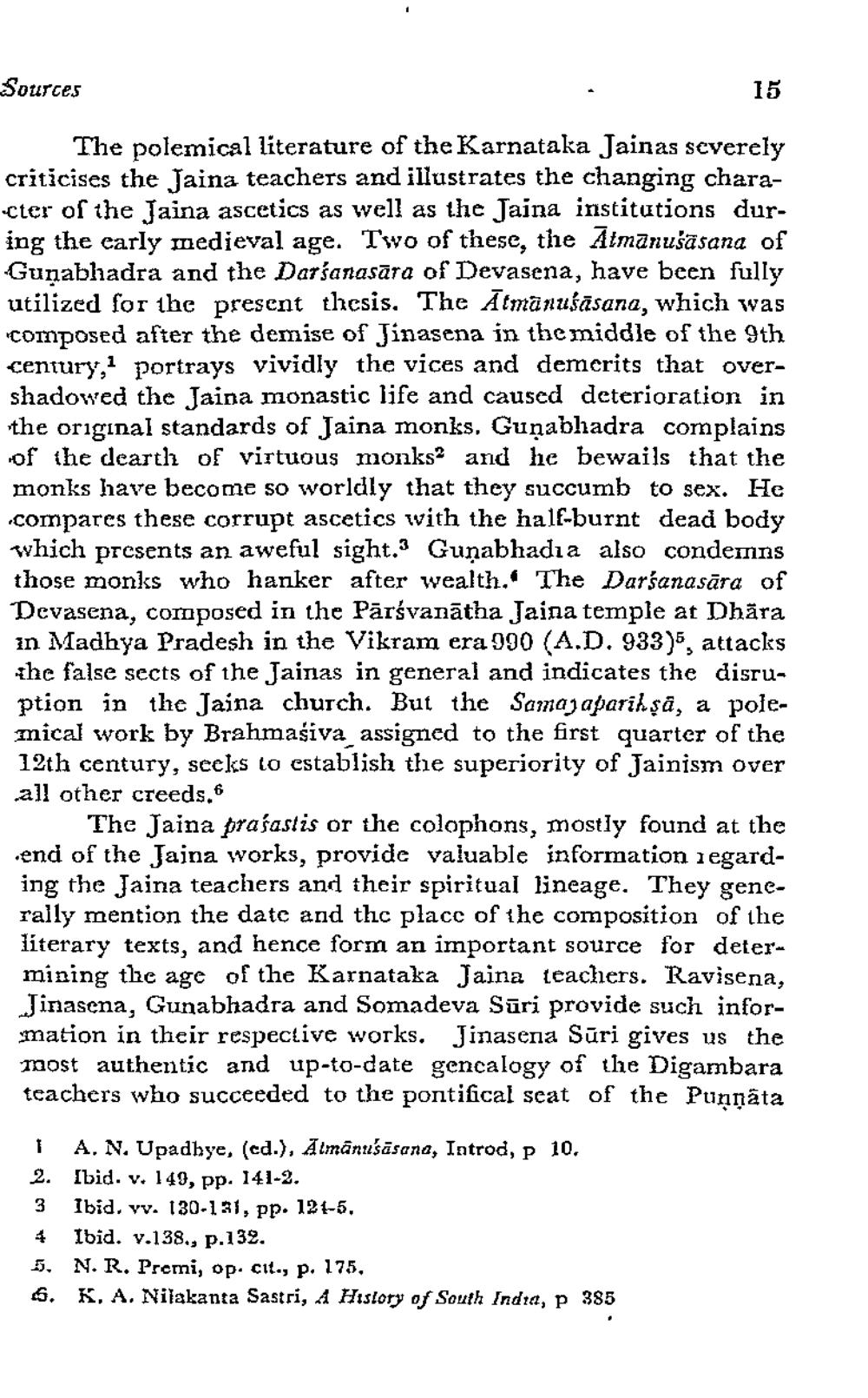________________
Sources
15
The polemical literature of the Karnataka Jainas scverely criticises the Jaina teachers and illustrates the changing character of the Jaina ascetics as well as the Jaina institutions dur. ing the early medieval age. Two of these, the Aimanušāsana of Guņabhadra and the Darśanasāra of Devasena, have been fully utilized for the present thcsis. The Atmanuśāsana, which was composed after the demise of Jinasena in themiddle of the 9th century,1 portrays vividly the vices and demcrits that overshadowed the Jaina monastic life and caused deterioration in the original standards of Jaina monks. Guṇabhadra complains of the dearth of virtuous monks and he bewails that the monks have become so worldly that they succumb to sex. He compares these corrupt ascetics with the half-burnt dead body which presents an aweful sight.3 Gunabhadia also condemns those monks who hanker after wealth. The Darsanasāra of Devasena, composed in the Pārsvanātha Jaina temple at Dhāra in Madhya Pradesh in the Vikram era 990 (A.D. 933), attacks the false sects of the Jainas in general and indicates the disruption in the Jaina church. But the Samaj aparilşa, a polemical work by Brahmasiva assigned to the first quarter of the 12th century, seeks to establish the superiority of Jainism over all other creeds.
The Jaina prasastis or the colophons, mostly found at the end of the Jaina works, provide valuable information aegarding the Jaina teachers and their spiritual lineage. They generally mention the date and the place of the composition of the literary texts, and hence form an important source for determining the age of the Karnataka Jaina teachers. Ravisena,
Jinasena, Gunabhadra and Somadeva Sūri provide such information in their respective works. Jinasena Sūri gives us the most authentic and up-to-date gencalogy of the Digambara teachers who succeeded to the pontifical seat of the Puņnāta
1 A. N. Upadhye, (ed.), Almānušāsana, Introd, p 10. 2. Ibid. v. 149, pp. 141-2. 3 Ibid, vv. 130-131, pp. 121-6. 4 Ibid. v.138., p.132. 5. N. R. Premi, op. cit., p. 175, 6. K. A. Nilakanta Sastri, A Hislory of South India, p 385




